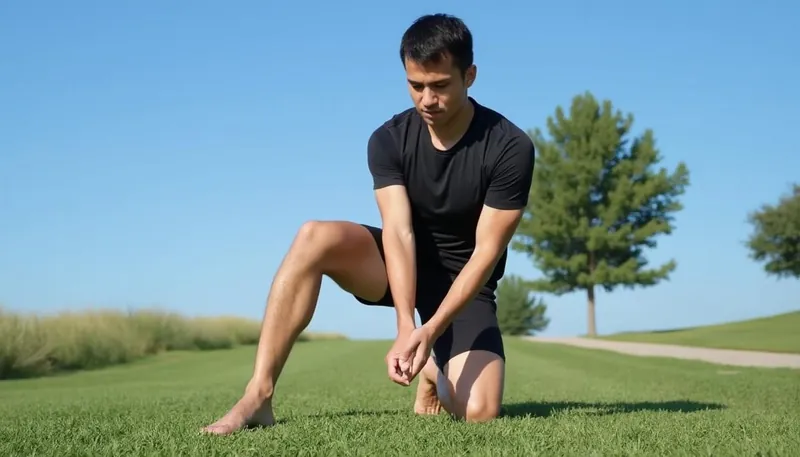Stretching plays a critical role in maintaining flexibility and overall physical health, and it’s a concept widely recognized across various age groups and fitness levels. Whether you’re an athlete gearing up for an intense workout or someone who simply wishes to improve their daily mobility, the type of stretching you choose can make all the difference. Among the many techniques available, two main categories stand out: static and dynamic stretching. Each serves its unique purpose and is best suited for specific situations, significantly impacting performance, injury prevention, and recovery. The conversations around stretching techniques are evolving with new insights and trends, particularly as we venture deeper into 2025. With advancements in sports science, understanding these differences becomes even more vital. This article will plunge into the heart of static versus dynamic stretching, exploring when to utilize each technique, their respective benefits, and relevant examples to help you become your most active self.
In brief:
- 🔹 Static stretching involves holding a stretch for a period to enhance flexibility.
- 🔹 Dynamic stretching incorporates controlled movements to warm up the body before activity.
- 🔹 Use dynamic stretches as a warm-up and static stretches for cool-down routines.
- 🔹 Both techniques offer unique benefits that can aid in injury prevention and performance enhancement.
- 🔹 Choosing the right stretching method based on your activity type can optimize your workout.
Understanding Static Stretching
Static stretching is all about taking your body into a stretch and holding that position without any bouncing. Imagine you are at the end of a workout, cooling down after an intense session—that’s the perfect time for static stretching. Not only does it help with muscle recovery, but it also serves to lengthen the targeted muscles and surrounding soft tissue, enhancing overall flexibility over time.
Common Examples of Static Stretches:
- 🦵 Hamstring Stretch: Sit and reach for your toes while keeping a soft knee.
- 🦶 Calf Stretch: Lean against a wall, placing one foot behind with the heel on the ground.
- 👐 Chest Stretch: Place your palm on a wall and gently turn away to open the shoulder.
- 🏃 Quadriceps Stretch: Stand and hold your ankle behind you to feel the stretch in your thigh.
When performing static stretches, it’s essential to move into a comfortable position and hold it for a duration of 15 to 60 seconds. Generally, doing 1 to 3 repetitions per muscle group works well. You should aim to feel a mild pulling sensation without experiencing any sharp pain. One strong point to remember about static stretching is to avoid lengthy holds immediately before any explosive physical performance, as it can hinder your power temporarily.
The best time for static stretching is undoubtedly post-exercise or during dedicated flexibility training. You might opt for static stretching if you have tightness but are not planning to engage in vigorous activity right away. This strategy helps enhance your comfort and mobility throughout the day.

Benefits of Static Stretching
Not only does static stretching feel refreshing, but it also brings a multitude of benefits. Here are a few notable perks:
- 💪 Enhances flexibility and range of motion.
- 🧘♀️ Helps in relaxing muscles and relieving tension.
- 🕒 Aids in recovery post-exercise, reducing soreness.
- 🏅 Suitable for all fitness levels and easy to integrate.
Exploring Dynamic Stretching
On the flip side, we have dynamic stretching, which should be in your toolkit especially if you’re gearing up for action. Dynamic stretching consists of controlled, active movements that safely take your joints through their full range of motion. It is designed to elevate heart rates, enhance blood circulation, and prepare the muscles and your nervous system for the tasks ahead.
Common Examples of Dynamic Stretches:
- 👟 Leg Swings: Gently swing one leg forward and backward while standing.
- 👐 Arm Circles: Make small to larger circles with your arms, engaging your shoulder joints.
- 🚶♀️ Walking Lunges: Take a step forward, bending both knees into a lunge.
- 🏃♂️ High Knees: Jog in place while lifting your knees high alternately.
When doing dynamic stretches, the key is to maintain smooth and controlled movements. You should aim for several repetitions—generally 6 to 12 controlled reps per movement—to truly increase mobility without causing fatigue. The best time for dynamic stretching is definitely right before exercise as part of your warm-up. Tailoring your movements to match the sport or activity you’re about to engage in can yield excellent results.
Benefits of Dynamic Stretching
Dynamic stretches offer significant advantages, making them an essential part of your pre-workout routine:
- 🔥 Increases heart rate and overall body temperature quickly.
- 🚀 Prepares muscles for high-intensity activities to minimize injury risks.
- 🌟 Improves agility and coordination through active movement.
- ⚡ Enhances exercise performance by activating specific muscle groups.

When to Choose Static or Dynamic Stretching
The choice between static and dynamic stretching often comes down to timing and specific goals. If you’re about to embark on a workout, dynamic stretching should be your go-to method. A suggested warm-up routine might include 1 to 2 minutes of light aerobic movement followed by dynamic stretches like leg swings and high knees. This protocol primes your body for activity by enhancing blood flow and mobility.
On the other hand, if you’ve just completed a workout or engaged in a particular physical activity, static stretching takes center stage. Cancel out muscle tightness and aid recovery by incorporating static holds of 15 to 60 seconds per stretch. Here’s a brief overview to help you plan:
| Action | Type of Stretch | Duration | Frequency |
|---|---|---|---|
| Pre-Workout | Dynamic Stretching | 1-2 minutes of light cardio + 6-12 reps | Before each session |
| Post-Workout | Static Stretching | 15-60 seconds | 1-3 times per muscle group |
| Before Workouts with Tightness | Dynamic Routine | Short bursts of movement | Daily tasks |
Performance Impact of Static Stretching
Research indicates that engaging in static stretching immediately before dynamic activities can cause a temporary decline in strength and power. This is particularly true if the holds exceed 60 seconds. Therefore, athletes requiring maximal power should opt for dynamic warm-ups while reserving static stretching for post-workout or dedicated flexibility training sessions.
Safety Tips and Considerations Around Stretching
Careful execution of stretching techniques can yield significant benefits, but it’s crucial to follow guidelines to avoid injury. Start with light movement to warm up before diving into deeper static stretches. Smooth, controlled movements are vital—bouncing into a stretch can lead to strains. If you’ve experienced recent injuries, such as tears or joint instability, it’s advisable to consult a professional before commencing new stretching routines.
Safety Precautions to Keep in Mind:
- ⚠️ Always listen to your body; avoid sharp pain.
- 🔍 Seek evaluation if you experience increasing discomfort or numbness.
- 💬 Consider professional guidance for injuries to design a personalized stretching plan.
Common injuries associated with improper stretching include:
- 🦵 Strains in hamstrings, quadriceps, or calf muscles.
- 🖐️ Shoulder injuries from improper arm stretches.
- 🔄 Back strains due to ineffective lower back stretches.
Incorporate these considerations into your stretching regimen, and you’re less likely to face setbacks in your fitness journey.
What is static stretching?
Static stretching involves holding a position to elongate the muscles and improve flexibility, typically performed after physical activity.
What is dynamic stretching?
Dynamic stretching includes active movements that prepare muscles for performance and improve mobility, usually performed before workouts.
When should I use static stretching?
Static stretching is best used after your workout to aid in recovery and enhance flexibility.
Is dynamic stretching better than static stretching?
Dynamic stretching is more effective as a warm-up, while static stretching is better for cooldowns.
What are the risks of stretching?
Overstretching can lead to strains and injuries; it’s essential to stretch properly and listen to your body.


